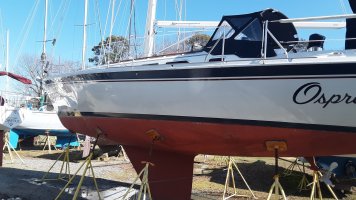the hulls of the 34-2 were essentially two halves joined together, while the PS built 34-200s were made from a solid, single piece of fiberglass.
I'm 99% sure that the E34-2 hull was laid up in one piece. I suspect SuperSailor can confirm.
And I'd be 100% surprised if PSC made any changes to the tooling. After all, most of the value they got out of the deal was the Ericson molds.
(some of the older models - eg, the 39 - *were* laid up in two pieces and bonded together along the centerline, because the tumblehome in the shape made it impossible to lift a finished one-piece hull from the mold.)
$.02
Bruce
Last edited:









